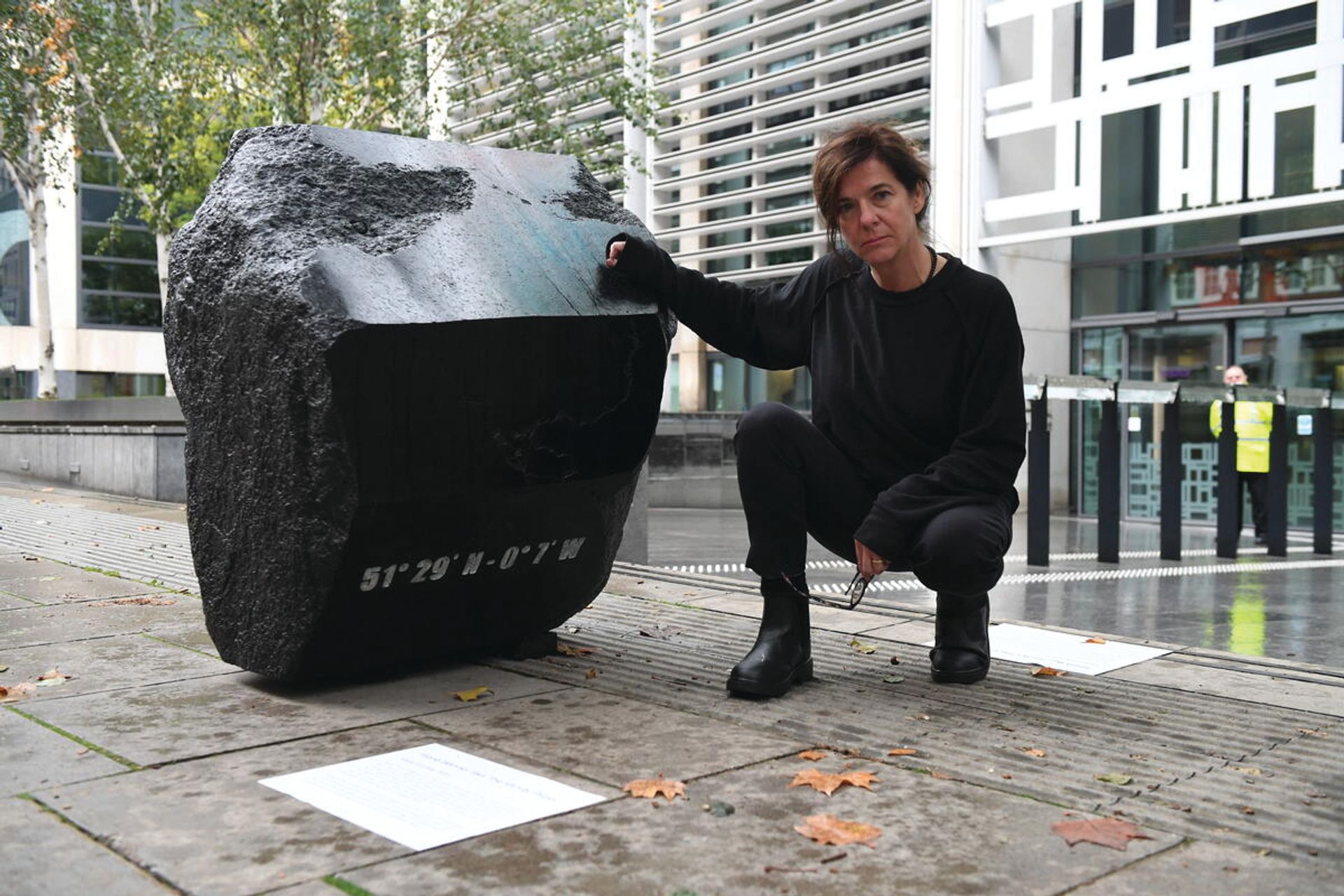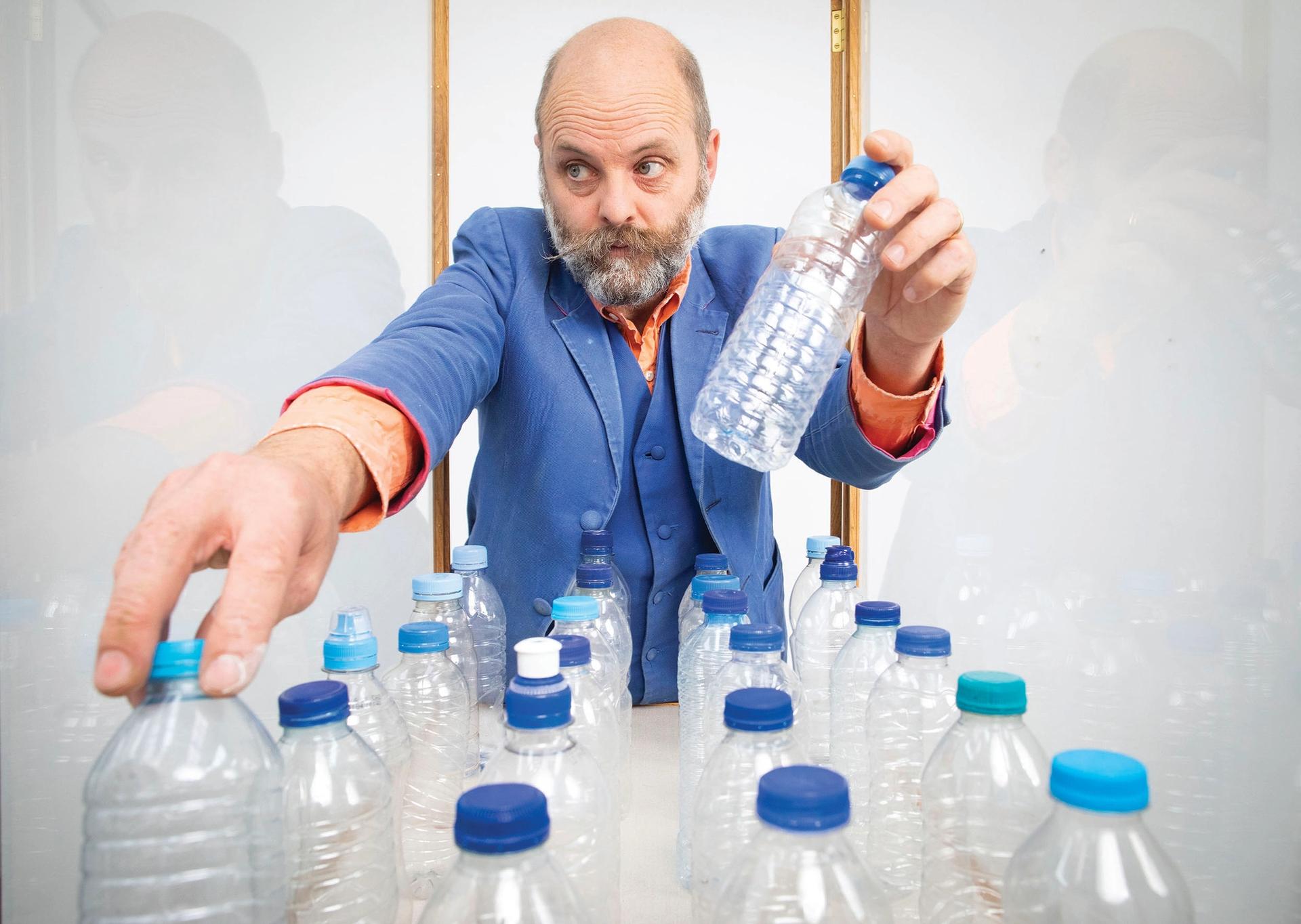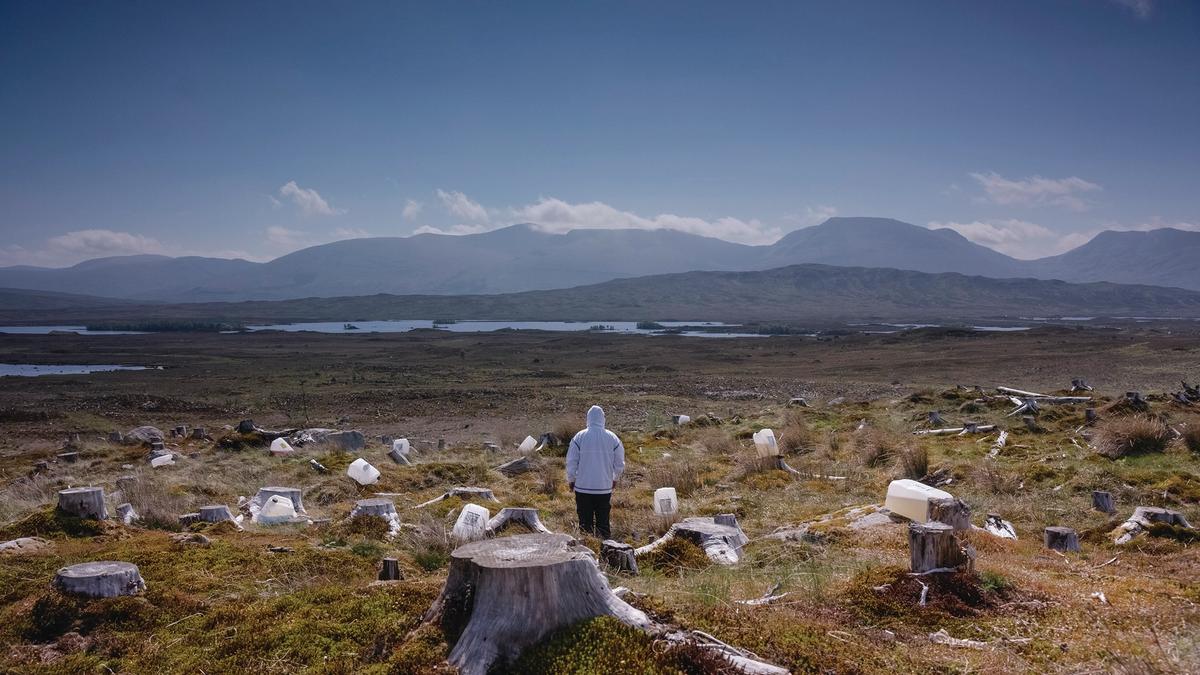As the art world tackles the climate crisis with organisations such as the Gallery Climate Coalition helping to monitor and reduce its carbon emissions, the artists who make the work upon which the entire sector depends have shown themselves to be at the forefront of this growing environmental awareness. Here, some leading names reveal how they are taking direct, practical and sometimes creative action in response to the climate and ecological emergency that faces us all.
Antony Gormley
“For me and my studio team, an economy of means—in regard to energy, water and all the materials necessary for making the work—is a serious concern. Together, we continue to interrogate all our old ways of doing things to discover new avenues for reducing our carbon footprint. We use recycled car brake discs as the raw material for cast-iron works and renewable energy to smelt them, the roofs of our studio buildings are solar panelled, we are planting trees and reducing our air travel, we ship work by boat and assess the potential harmful impact of each and every project we are asked to consider. I support all the means that make governments and industries, particularly the oil industry, accountable, like ClientEarth and the Environmental Justice Foundation. There is much still to be done.
"What should an artist’s role be at a time of climate emergency? There are days when it is difficult to know. But it is important that all artists vigorously continue to make work that opens new ways of thinking and feeling. The climate crisis brings urgency. Massive change is necessary. By realising objects that have never been imagined before and sharing them, artists demonstrate each individual’s capacity for change and the responsive sensibility we need to build a collective, sustainable future.”
Gary Hume
“Two years ago I had a lovely speedboat trip down the Thames for a birthday present, and as a jet went across leaving its vapour trail I was overwhelmingly joyful about our capacities and London’s history. Afterwards, when we were trying to cross Waterloo Bridge, Extinction Rebellion protesters had blocked it. Again, I felt incredible joy at what we can do as a species, while at the same time realising that the very things I had just been marvelling at were also causing the problems heading our way. I thought I should join in and do my little bit to try and stop the global heating catastrophe.
"I had just been a judge on the BP Portrait Award and so I wrote a letter to the National Portrait Gallery and organised other artists to join me in asking for their sponsorship to stop. Then I looked at my own practice and realised the main carbon-producing part of my business is in shipping. I had never taken any notice of it—just handed it over to the galleries. So I asked the moving company Cadogan Tate if they could have a look at my carbon output on shipping works by air versus sea freight. I don’t do air any more. The only practical change is that if I have a show in May, I used to finish the work by April and now I have to finish the work by February. All I have to do is mentally shift my finish date—there is no creative cost. And you save so much carbon and so much money.”

Working with Greenpeace, Fiona Banner delivered her granite sculpture, Full Stop Klang (2020), to Defra’s offices. Photo: © Chris J. Ratcliffe/Greenpeace
Fiona Banner
“I wanted to deploy my sculptures as agents for change because the rhetoric coming from our government was duplicitous. To use a full stop to call that out, to put it in front of Defra [the UK Department for Environment, Food and Rural Affairs], which is in the same building as the Home Office, felt appropriate. To some extent, there has been a shift in my practice in terms of addressing the environment. But I’ve always thought about our strange and violent relationship with nature. It’s just now the science is out in front of us all. But although we were all incredibly bad at responding to science, what we can respond to is imagery, to things in front of us. Recently, I have been using my work to create those powerful images.
"We need to change our relationship with the environment and we need to take more responsibility. That’s why I’m continuing to make work where I’m thinking about our complicated relationship with nature—something we revere and celebrate and, at the same time, abuse and manipulate and use as a resource in the most brutal of ways. It’s right there in front of us: the headlights are on and either we’re blinded by it or we try to respond to it.”
Tino Sehgal
“Obviously, going by land is the best way of doing things—or not travelling at all and doing a Zoom call. But I think the most important thing is to be conscious. There’s so much you can do without the spectacularity of taking the Trans-Siberian railway. It’s a really simple matter of just organising your year well.
"It’s really helpful doing just one flight instead of five, and saying, okay, I need to fly to LA, but I’m going to do all my West Coast stuff in that period. The way I see it is that we are in a relationship with the planet. And if you are in a relationship, it means that you don’t just take, take, take, and you don’t just give, give, give: you take and you give.
"The climate crisis doesn’t easily fit into the art discourse as it’s mostly about simple, practical actions. And why we have a climate crisis nowadays is that basically every action we do emits carbon dioxide. That’s why it’s such a challenging and also a fascinating problem.”
Tino Seghal was speaking on 8 June 2021 at a Gallery Climate Coalition event

Waste is a recurring theme in the work of Gavin Turk, who was arrested in 2018 during an Extinction Rebellion protest. Photo: © David Levene/Guardian/eyevine
Gavin Turk
“There’s this growing sense of importance around the environmental issue and it’s now unavoidable. Although I know that high-level governmental systemic change is needed,it’s also difficult to say that if you’re not doing it yourself. So I’m trying as much as I can to view all the things that I’m doing within the context of the environment.
"Around 2015-16 I had managed to get my artistic practice to where I could do several exhibitions a year—I was travelling almost every week and flying around the world. But it just got to the point that if I wanted to be an active participant in the environmental movement then I couldn’t justify flying, so the last flight I took was in 2018.
"I was a vegetarian for a long time and then my daughter and I tried being vegan, almost as a kind of test. And now it’s been about six years. In the art that I’m making, I’m also pushing even more on the idea of waste and recycling and about not really throwing things away. Everyone else says that I’m a hoarder, but I just think everything around me is really important stuff.”
John Akomfrah
“Climate justice, social interests, possible utopias: these are all commingled and overlap, because all of the ways in which we envisage problems or solutions are also tied to our sense of what could be better. The transformation needs to be across the board—we need to change our sense of what a good life is. You can’t make a change for fewer emissions if you’re attached to a certain way of living which is tied to a certain consumption of energy.
"I’m committed passionately to the idea of a recycling aesthetic. And that’s because I realised that I work in one of these spaces—time-based practice, film, television, cinema—which is incredibly wasteful. If you make a documentary, you shoot, say, 100 hours and all that travelling, all that scouring the globe, leaving a carbon footprint of gigantic proportions, boils down to an hour’s worth of material, because that’s all you’ve been commissioned to provide.
"I profoundly believe that if I get the relation between self and practice right, I’m also aligning forces that might be right outside of it. Yes, I’m interested in the archival for all sorts of memorial reasons and for its importance in the sustaining of a diaspora. But this drives in another ethical move in which I believe that there’s so much out there, that adding more to it without thinking through what to do with what there already is, is criminal. More and more, I feel that there’s no need to add more things.”
Jane and Louise Wilson
“Like many artists, we’re attempting to address the environmental impact of our practice in film and photography by working towards more sustainable digital solutions in place of chemical analogue processes.
"We try to consider our photo printing methods, so that we can reduce paper waste also by choosing companies and products that are eco-friendly and who use recycled products in their manufacturing processes. We have this past year made several online exhibitions which not only reduced the production and transportation costs of artwork but also presented a compelling virtual platform.”


